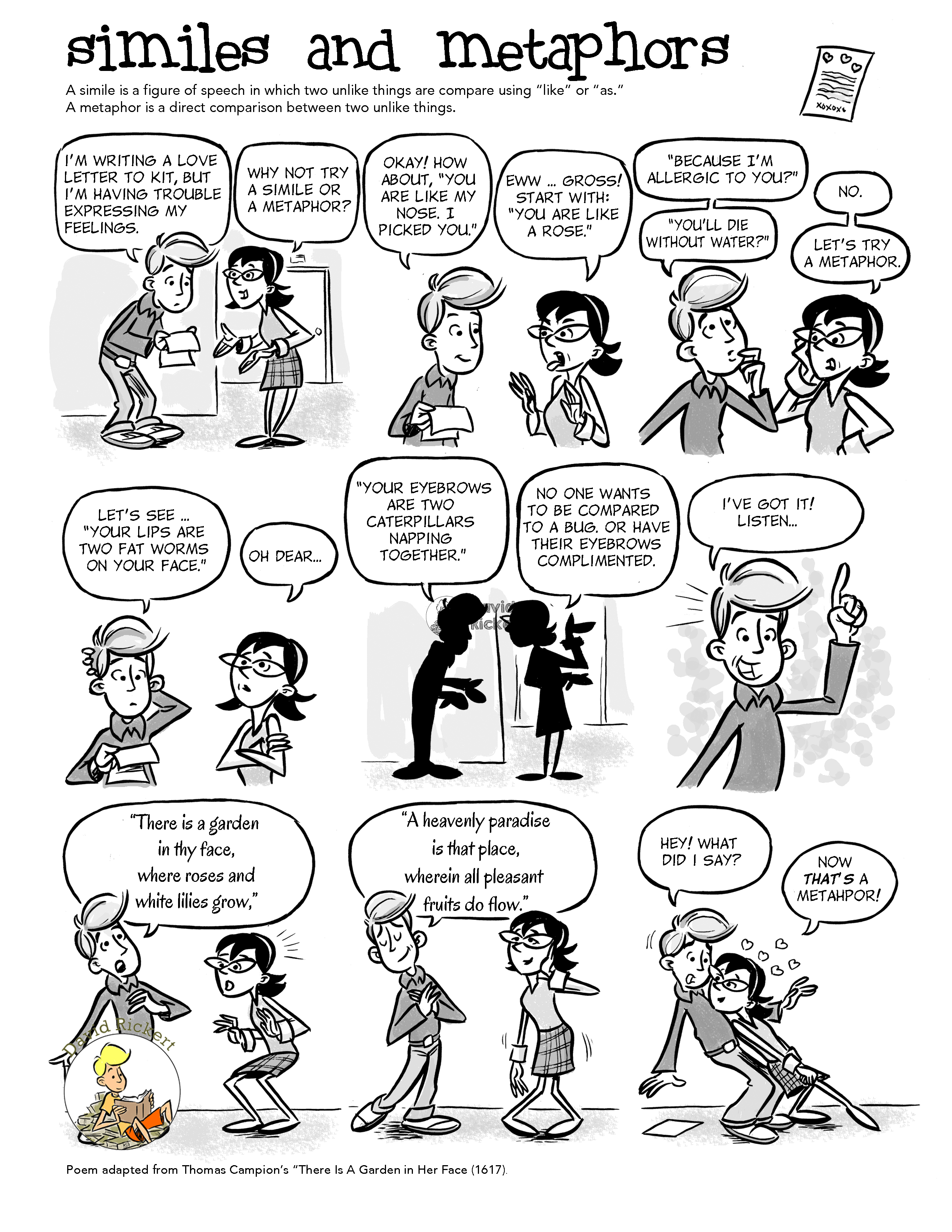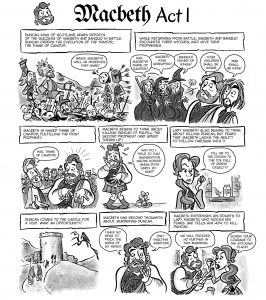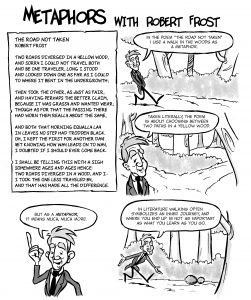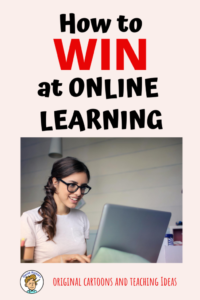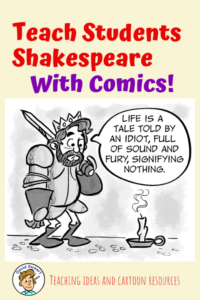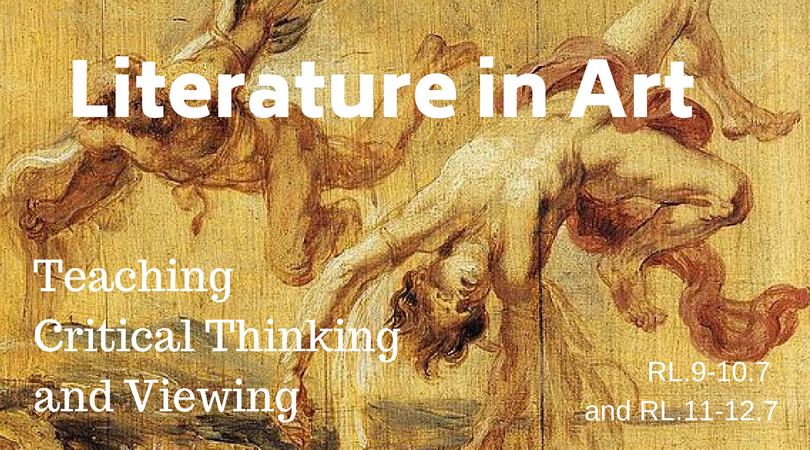 Sometimes English classes can be art appreciation courses. We read a book, we examine carefully how the author worked his magic, and we write papers in which we analyze those techniques. We present students with literature that we hope will move them emotionally in some way, which is what all artists hope to accomplish with their craft.
Sometimes English classes can be art appreciation courses. We read a book, we examine carefully how the author worked his magic, and we write papers in which we analyze those techniques. We present students with literature that we hope will move them emotionally in some way, which is what all artists hope to accomplish with their craft.
We just finished a curriculum revision in our district in which we carefully and thoughtfully aligned what we taught with the standards. We started with the standards and worked our way backwards from there – what assessment can we design that would test that standard?
Two of the standards that gave us a little bit of trouble are RL.9-10.7 and RL.11-12.7, both of which require the analysis of representations of literature across different artistic media and the evaluation of how that representation treats the source material. It was really tempting to say, “We already do that! We read Romeo and Juliet and then we watch the movie version. We look for the differences, maybe do a Venn diagram. We have that covered.”
However, this method of instruction doesn’t get the job done for a couple of reasons:
- By comparing the play and the film we are doing an activity. We aren’t assessing students’ ability to analyze the representation of literature in different media.
- We’re missing an opportunity to do something more a lot more complex, and in doing so expose them to forms of artistic expression that are foreign to them.
Unpacking this standard
Let’s start off by looking at the example that the Common Core standards provide with the story of Icarus. In this scenario, we’d be reading the myth and looking at Breughel’s “Landscape with the Fall of Icarus” (a painting) and Auden’s “Musée des Beaux Arts” (a poem about that painting.)
There are plenty of lesson plans out there that address this particular grouping. In fact, I have a lesson on Icaurs that includes more than just that painting and poem. But most of us don’t want to throw the story of Icarus somewhere during the year to meet this standard. We want to add it to something we already do.
Fortunately, if you teach Shakespeare (and there’s a good chance if you teach high school that you do) there are lots of opportunities to see what other artists have done with the source material besides creating a film.
Here are some techniques.
As an example, let’s look at some options with a play I teach: Shakespeare’s Othello. Once we are finished reading it I like to have students examine paintings of the final scene of the play, where Othello confronts Desdemona in her chambers and (spoiler alert!) strangles her for her alleged infidelity.
First off, here’s “Desdemona and Othello” by Antonio Muñoz Degrain: 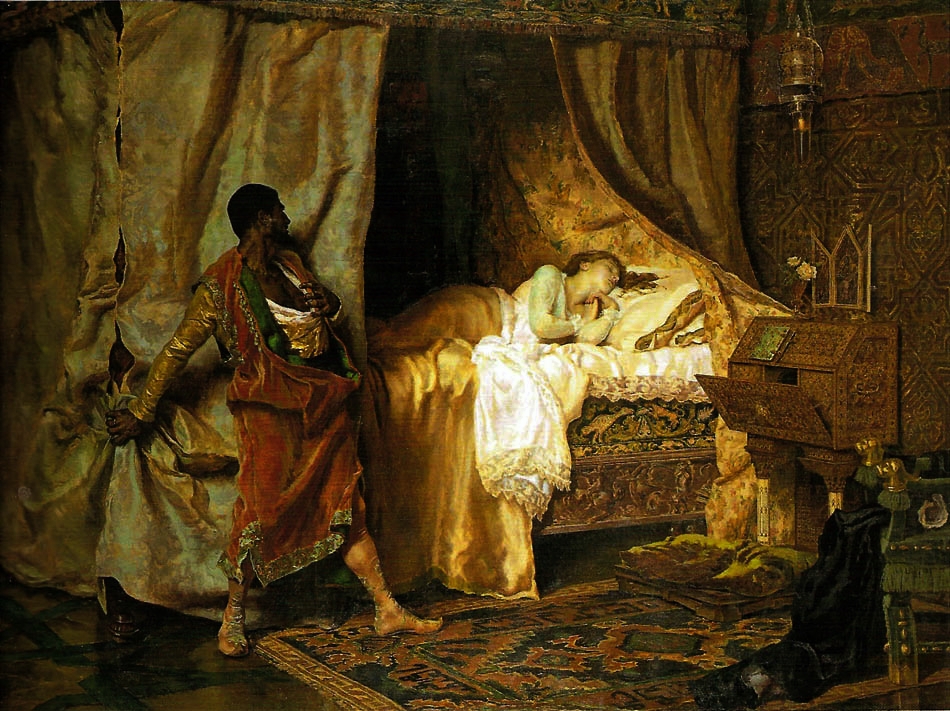

And here’s “The Death of Desdemona” by Eugène Ferdinand Victor Delacroix. 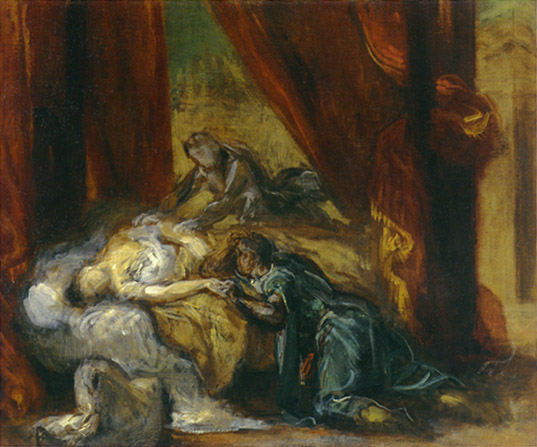

There are plenty of others out there as well that you can find with an image search.
When I’m using an image I project it in front of the classroom and give students a black and white copy to annotate. As they look at the image can come closer to the screen for a closer look if they wish (of course you could also do this on devices if you’re 1:1.)
Any time we’re looking at an image there are a few basic questions I want my students to answer, which are based on Edmund Feldman’s Method of Art Criticism.
1. Describe what you see in the painting. Avoid using value judgments, like “beautiful” or “funny looking.”
2. Analyze the painter’s use of design elements, such as lighting, color, shapes, and texture.
3. Interpret what the artist says about the scene. Is there a particular mood they are trying to convey?
4. Discuss the overall strengths or merits of the work. Do you feel like the painting is an accurate and effective representation of the scene?
And I like to add one more:
5. Why this particular moment? Why not five minutes (or seconds) before or after this moment?
You can model one image with the whole class and then have them work individually on the second. The Degrain image is pretty straightforward, but the Delacroix requires more interpretation. For example, who are the two people gathered around the bed? How does Delacroix communicate the emotions in the scene without facial expressions? By showing both, we are teaching students to work with realistic interpretations as well as an impressionistic reading.
Assessing this Skill
I take a series of images from various parts of the play – both painting and book illustrations, maybe some sculptures if I can find pictures of them – and place them on a series of slides. I project the slides in front of the class in five-minute intervals. For each slide, they have to answer the following questions:
- What scene is this?
- How do you know?
- What choices did the artist make to communicate the emotion in this scene?
- What line from the play would be the best caption for the work of art?
Not only are students demonstrating their ability to analyze an image, but they are also using evidence, finding support from the text, and using all sorts of writing skills if you choose to assess that as well.
Othello in Other Media
But you don’t have to use paintings. Many Shakespeare plays have been turned into ballets and there are clips of performances on YouTube. Here’s an example from Hamburg:
[youtube https://www.youtube.com/watch?v=Jpwz6FLFqBw&w=560&h=315]
I don’t know which part of the play this represents (partially because I don’t read German). But that’s part of the challenge for the students: which part is it? How do you know based on the music and the movement? I’m guessing it’s early on in the play and establishes that Desdemona and Othello are truly in love, which is important for the rest of the play to work. But I have no way to be sure – it’s an informed guess based on reading the text.
Othello was also turned into an opera by Giuseppe Verdi. While most of my students have some knowledge of ballet, most have never listened to an opera, at least not closely. You can certainly watch a portion of the performance (again, there are several on YouTube) but I like to do an activity with a translated portion of the libretto (the text of the opera) while we listen to it. Sometimes it differs greatly from the original text and brings in new themes. If you’d like a libretto activity for Othello, click here and I’ll send it to you.
How do you turn these into an assessment? The same way you can with the paintings. Offer up some video clips of dances or other parts of the libretto and have them analyze them in the same fashion.
If you’re looking for other fun ways to teach Shakespeare, click here.
Other plays (and Greek myths)
You can do this with virtually any Shakespeare play. There are lots of great paintings for A Midsummer Night’s Dream, for example. And many of the plays have been turned into an opera or a dance that are easily available online. You can find modern takes on the plays in poetry, although it can take a little digging to find them. Here’s a great poem called “Purgatory” by Maxine Kumin that imagines what might happen if Romeo and Juliet successfully ran away together.
Of course, if you want to do Greek Myths but maybe Icarus isn’t your thing, there are a lot of myths that have been rendered in works of art, particularly painting and sculpture. And there are a ton of poems that reinterpret the Greek myths, like Rita Dove’s “Demeter’s Prayer to Hades.” What’s fun about Dove’s poem (and a lot of the other poems that are based off of myths) is that if you don’t know the myth, you read it one way, and once you know the myth the meaning completely changes. And if you’re looking for a good way to add it to something you already do, why not connect it to a lesson on allusions? Find in allusion to a Greek myth in something you’re reading and away you go.
Final Thoughts
Of course, there are great reasons to show the movie version of a work of literature. The kids enjoy it and-let’s be honest-you can get caught up on grading. But we don’t want to miss the opportunity to teach students to critically think about what they see. It matters because our students are bombarded with images every day. We need to teach them to critically view those images. What am I seeing? Why am I seeing it? If I’m compelled to do something (like buy a pair of shoes) how did the image convince me to do that? And what’s the ultimate agenda of the creator of this image? Looking at these works of art helps students develop these skills.
Learning should be fun! Check out my Teachers Pay Teachers store for fun resources like the ones you see below.

